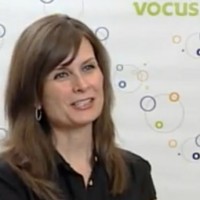 More than three years ago, I decided I would go on the speaking circuit to see if we could drum up some business that way.
More than three years ago, I decided I would go on the speaking circuit to see if we could drum up some business that way.
The first year sucked.
I did 40 speaking engagements in 2010 – some free and some paid. And not one brought us any business. I was getting high scores and great feedback, but the business wasn’t coming.
You see, I’m not a salesperson. I don’t get up there and talk about how great we are. Instead, I deliver speeches that mean something to the audience.
If someone doesn’t walk away with at least three actionable items from an hour presentation, I feel like I didn’t do my job as a speaker.
And I thought that was enough to drum up some business.
I was wrong.
We scaled way back last year. I did only 24 speaking engagements. And guess what happened? We started to gain clients for Arment Dietrich from them.
I’ve been thinking about why that is, and I’ve come up with seven ways for you to gain business from your speaking engagements.
- Don’t spend time on your bio. No one cares. In fact, when people ask me how I want them to introduce me, I always say, “Set the expectations low so I can over-deliver.” That always gets a chuckle, but it’s true. People will get a good sense of who you are and where your expertise lies without having to hear someone drone on and on about you. So nothing more than your name, where you work, and one (just one) thing you’re working on. Right now, I have them mention the forthcoming book. That means I’m introduced within 30 seconds and I can take the stage.
- Use relevant case studies. You want to use case studies that are relevant to the people in the audience. For instance, this weekend I’m speaking at the Retail Packaging Association trade show. I’ve discovered, of the hundreds of attendees, only five (!!!) use social media. I have created case studies on what they’re doing really well so their peers can learn. Not only will that make them heros of the conference, they’ll be more inclined to want to work with us when they need some help.
- Use your own case studies. While you want to make sure most of the case studies you use are relevant to the audience, I’ve found when I talk about results we’ve had for Spin Sucks, it draws a lot of attention. The reason being is that I have access to the analytics and the ecommerce and I can show real results that are meaningful to my audiences. I have one slide I use in every presentation that shows how I link to a Spin Sucks Pro product in a blog post, the in-page analytics from Google, and then the ecommerce. This shows them how I talk about a product in a blog post, how many people clicked on the link, and how many of those converted to sales. People. Love. This. And it demonstrates to them the kind of work you could do for them. Without selling.
- Get the audience involved. I like to do things such as ask the audience to stand up. Then I ask them to sit down if they don’t have the following social networks. I start out by naming Facebook and then LinkedIn and then Twitter. And then I start to drill down until there is only one person standing. That person becomes my teacher’s pet and I say so, by using his or her name (see #5) throughout the rest of my presentation. I also know this person is going to be the one I can say, “George, how would you answer Cindy’s question?” when I’m not sure of the answer.
- Use people’s names. I like the settings where table tents are used so I can see people’s names beyond the front row. If you call on people, by name, they’ll remember you after you leave. But, if you’re in a large audience, get off the stage and walk around. Look at people’s nametags. Talk to them, specifically.
- Provide a leave-behind. Give the audience something they can take home. The main purpose of this is so they have your contact information without having to hunt for it. But if you give them something of value (I always leave them with an eBook that you’d otherwise have to pay for), they’re going to feel like they really got a lot out of your presentation.
- Follow-up, follow-up, follow-up. Depending on where you’re speaking, you can negotiate the conference give you a list of attendees. If they won’t do that, there is one easy thing for you to do. Tell the audience you’d love to send them something – it can be a keychain or a flash drive or an eBook or a link to a webinar – and ask for them to leave you their business card. Or you can have a giveaway during your presentation to one audience member by having people leave their cards in a bowl on the stage. Or you can simply say, “If you’d like to join our newsletter (or blog) list, leave me your card and I’ll make sure it happens.” Of course, make sure you’re abiding by the CAN SPAM Act when you do this.
There are probably an infinite number of things you can do, but this gives you a really good start.